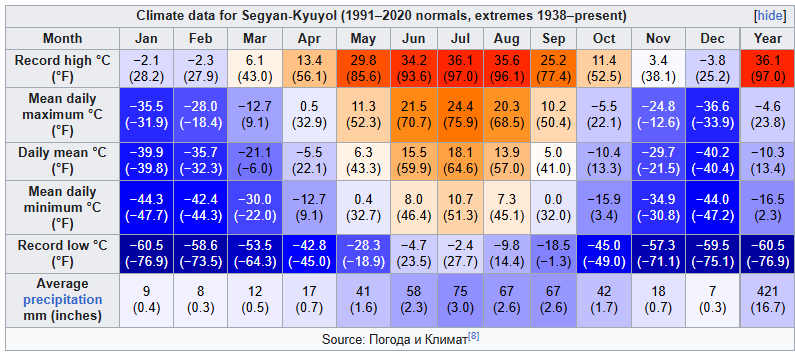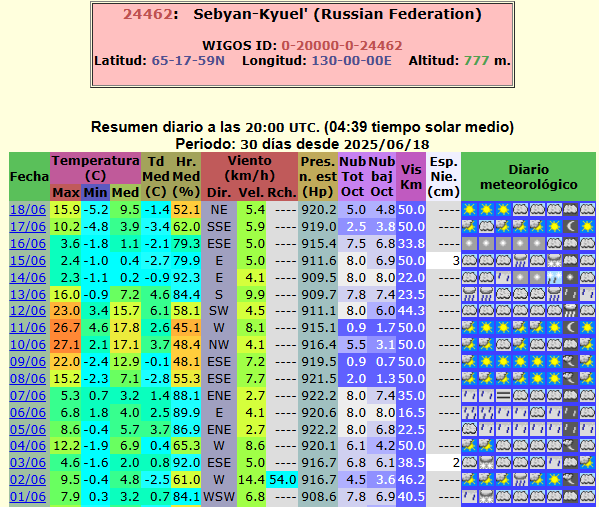
On June 21, 2025, Segyan-Kyuyol, a small village in Siberia’s Sakha Republic, shocked climatologists by recording a record-breaking low temperature of -5.2°C in June, the coldest June temperature ever documented in the area’s history.
Located in the far northeastern part of Russia, Segyan-Kyuyol typically endures extreme cold during winter but sees relatively mild and brief summers. This drastic drop in temperature so late in the season is extremely unusual and highlights growing irregularities in the region’s climate. The cold air mass responsible for this freeze likely originated from the vast Siberian High pressure system but was intensified by unusual atmospheric conditions.
What makes this event even more extraordinary is the accompanying snowfall in summer (3 cm), a rare phenomenon in a month typically dominated by warmth and thawing. Reports confirm that snow dusted the ground and surrounding forests, turning the landscape white at a time when most vegetation is in full bloom.
This snow in late June has raised concerns among scientists studying climate variability in the Arctic and subarctic zones, as it signals increasing weather volatility caused by global warming. Paradoxically, while the Arctic is warming faster than most of the planet, it is also experiencing more extreme swings in temperature and precipitation patterns. Segyan-Kyuyol’s record cold and snow in June offer a vivid example of how climate change is disrupting traditional seasonal rhythms in even the most remote regions.
This event also poses challenges for local communities and ecosystems. Crops and plants adapted to a short growing season may suffer damage from unexpected frost and snow, impacting food supply and wildlife habitats. Infrastructure in these harsh environments, already vulnerable to permafrost thaw, now faces additional stress from sudden freezes. As climate scientists continue to monitor these unprecedented developments, the case of Segyan-Kyuyol serves as a critical data point illustrating the complex and sometimes contradictory effects of a changing planet.

Source: https://en.wikipedia.org/wiki/Segyan-Kyuyol

Source: https://ogimet.com/cgi-bin/gsynres?ind=24462&ano=2025&mes=6&day=18&hora=20&min=0&ndays=30

Illustration picture: https://www.facebook.com/photo.php?fbid=3983258945063888&id=435758609813957&set=a.436726773050474


























